
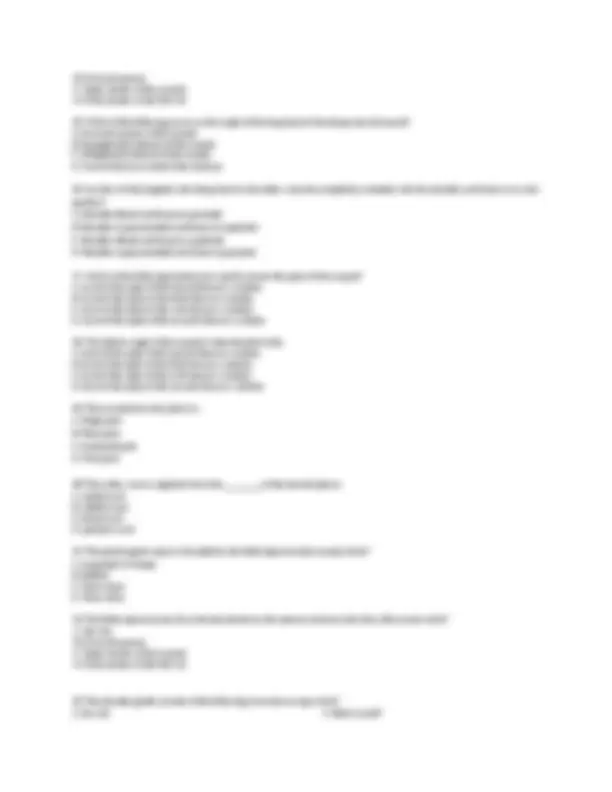
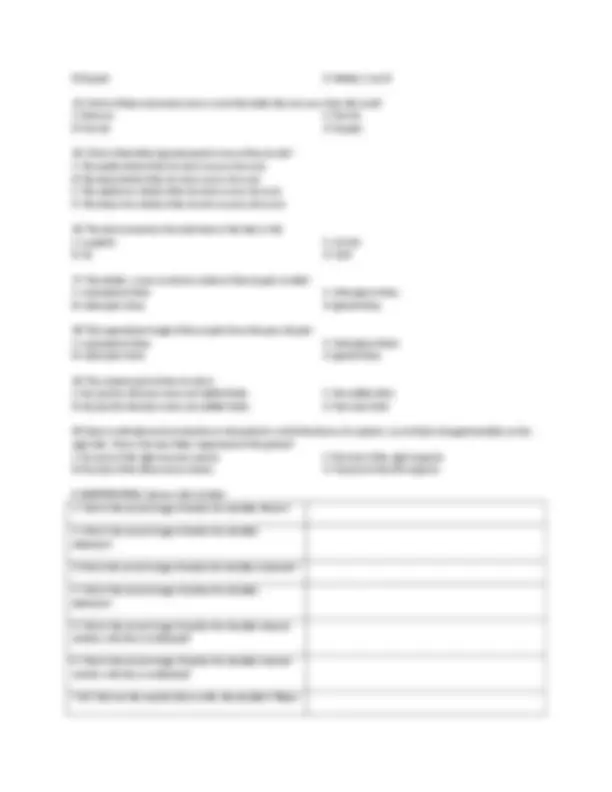
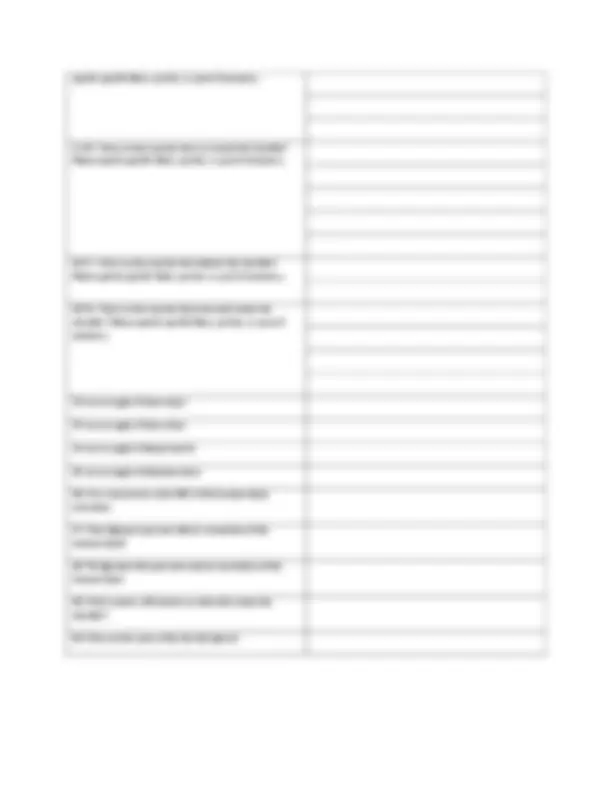
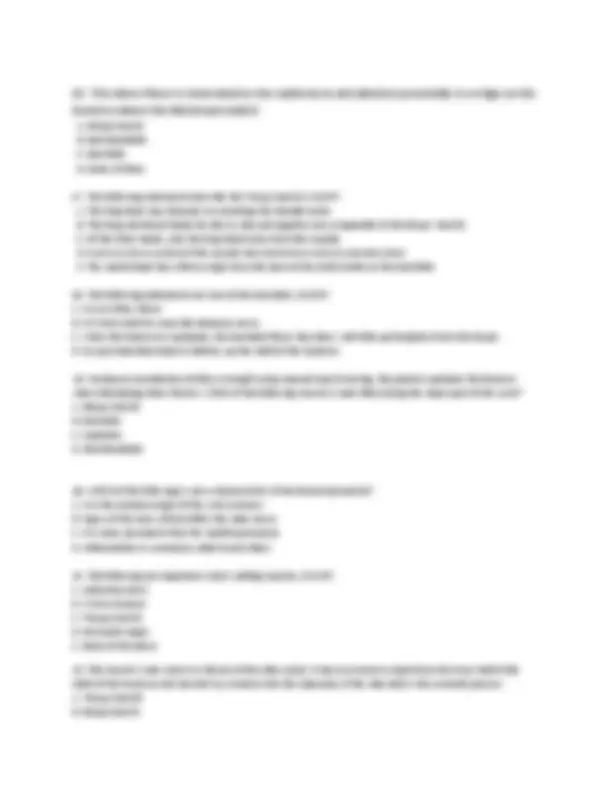
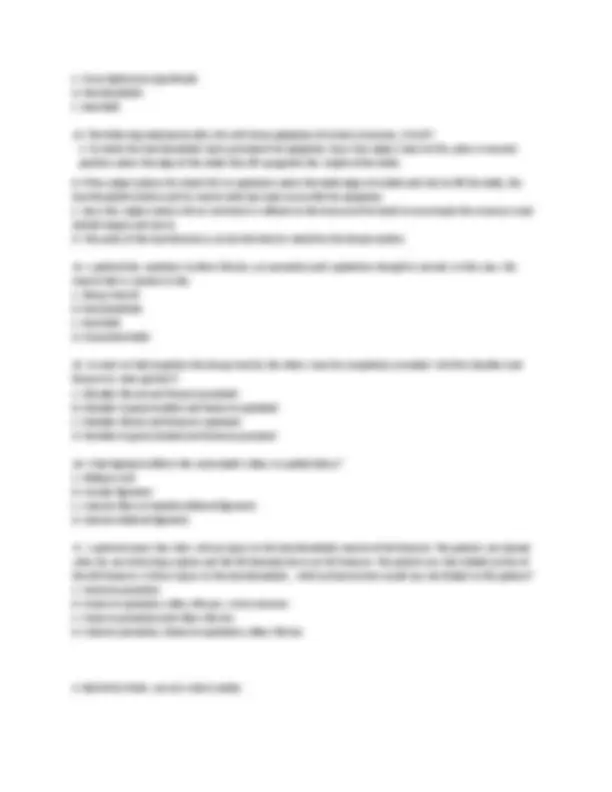
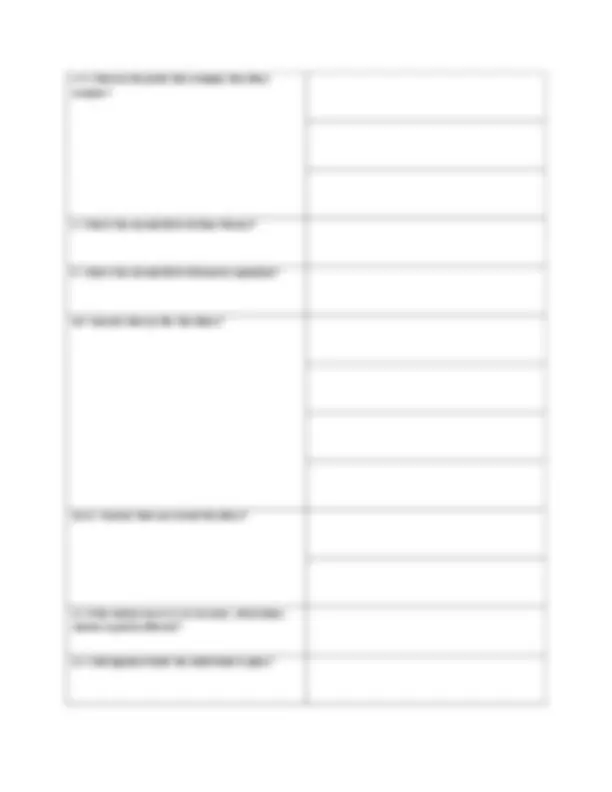
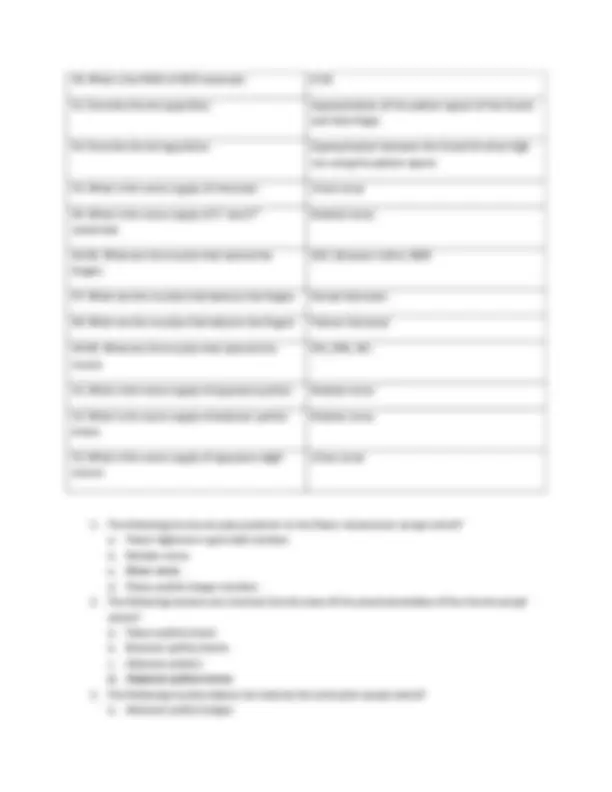
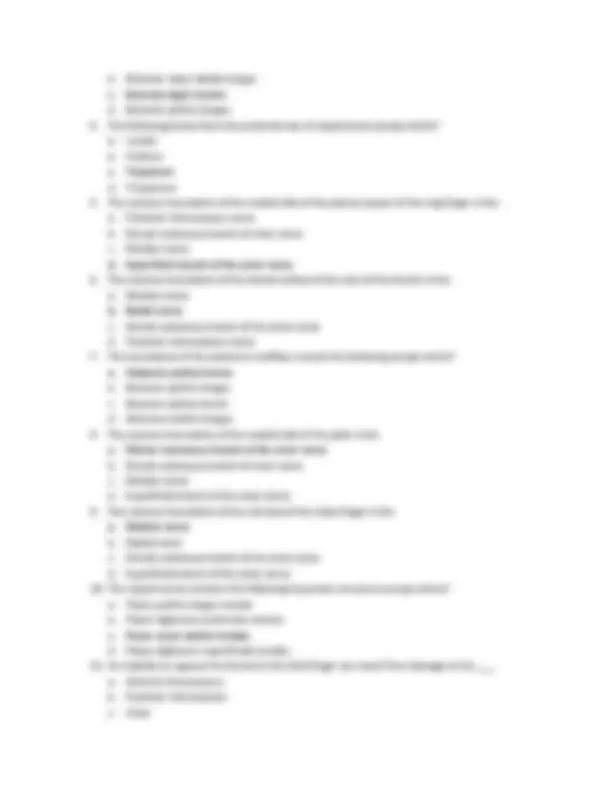
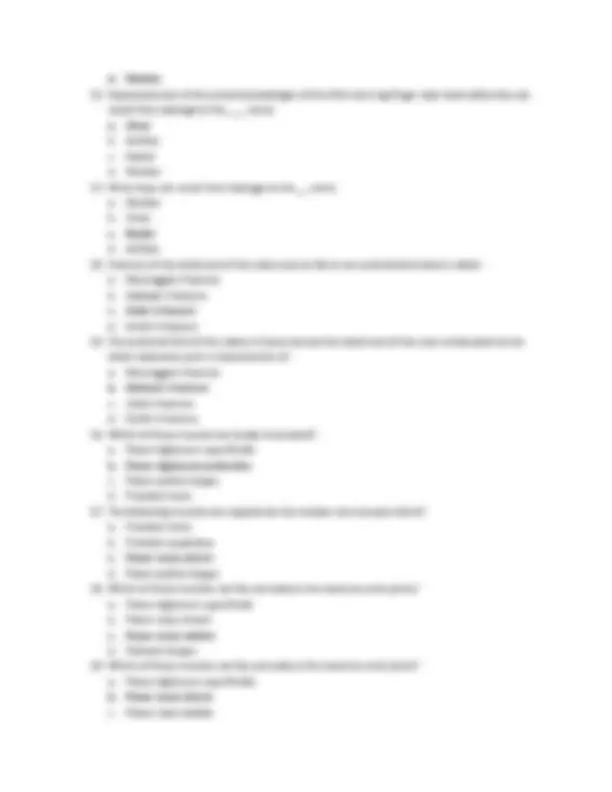


Study with the several resources on Docsity

Earn points by helping other students or get them with a premium plan


Prepare for your exams
Study with the several resources on Docsity

Earn points to download
Earn points by helping other students or get them with a premium plan
Community
Ask the community for help and clear up your study doubts
Discover the best universities in your country according to Docsity users
Free resources
Download our free guides on studying techniques, anxiety management strategies, and thesis advice from Docsity tutors
In this document, it is a set of exams where the anatomy of the upper extremity is being tackled (Shoulder, Elbow, Wrist and Hand). It is a multiple-choice set of questions with answers provided through BOLD font, there is also a table presented about the question in relation to the range of motions. There is also a part where the questions were only presented and not with answers.
Typology: Exams
1 / 17

This page cannot be seen from the preview
Don't miss anything!










PHYSICAL THERAPY DEPARTMENT SCHOOL-BASED REVIEW PROGRAM GROSS ANATOMY OF THE SHOULDER REGION NAME:_________________________________________ SCORE:___________ I. MULTIPLE CHOICES. ENCIRCLE the letter that corresponds your correct answer.
B. Pectoralis minor C. Latissimus dorsi D. Serratus anterior
B. Scapula D. Neither A nor B
specify specific fibers, portion, or parts if necessary. 11 - 15. What are the muscles that can extend the shoulder? Please specify specific fibers, portion, or parts if necessary. 16 - 17. What are the muscles that abducts the shoulder? Please specify specific fibers, portion, or parts if necessary. 18 - 21. What are the muscles that externally rotate the shoulder? Please specify specific fibers, portion, or parts if necessary.
B. lateral epicondyle of humerus. C. annular ligament of proximal radioulnar joint. D. neck and shaft of the radius.
A. Biceps brachii B. Brachioradialis C. Brachialis D. None of these
1 - 3. What are the joints that compose the elbow complex?
b. Extensor carpi radialis longus c. Extensor digiti minimi d. Extensor pollicis longus
d. Palmaris longus